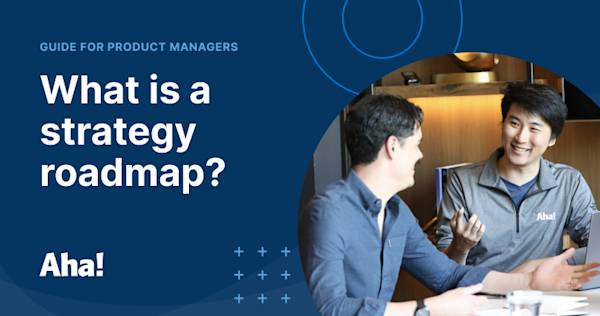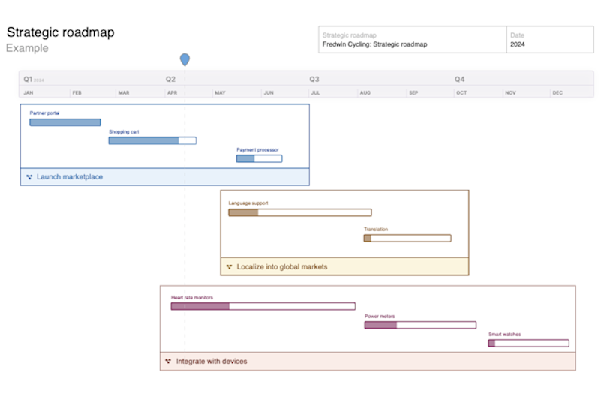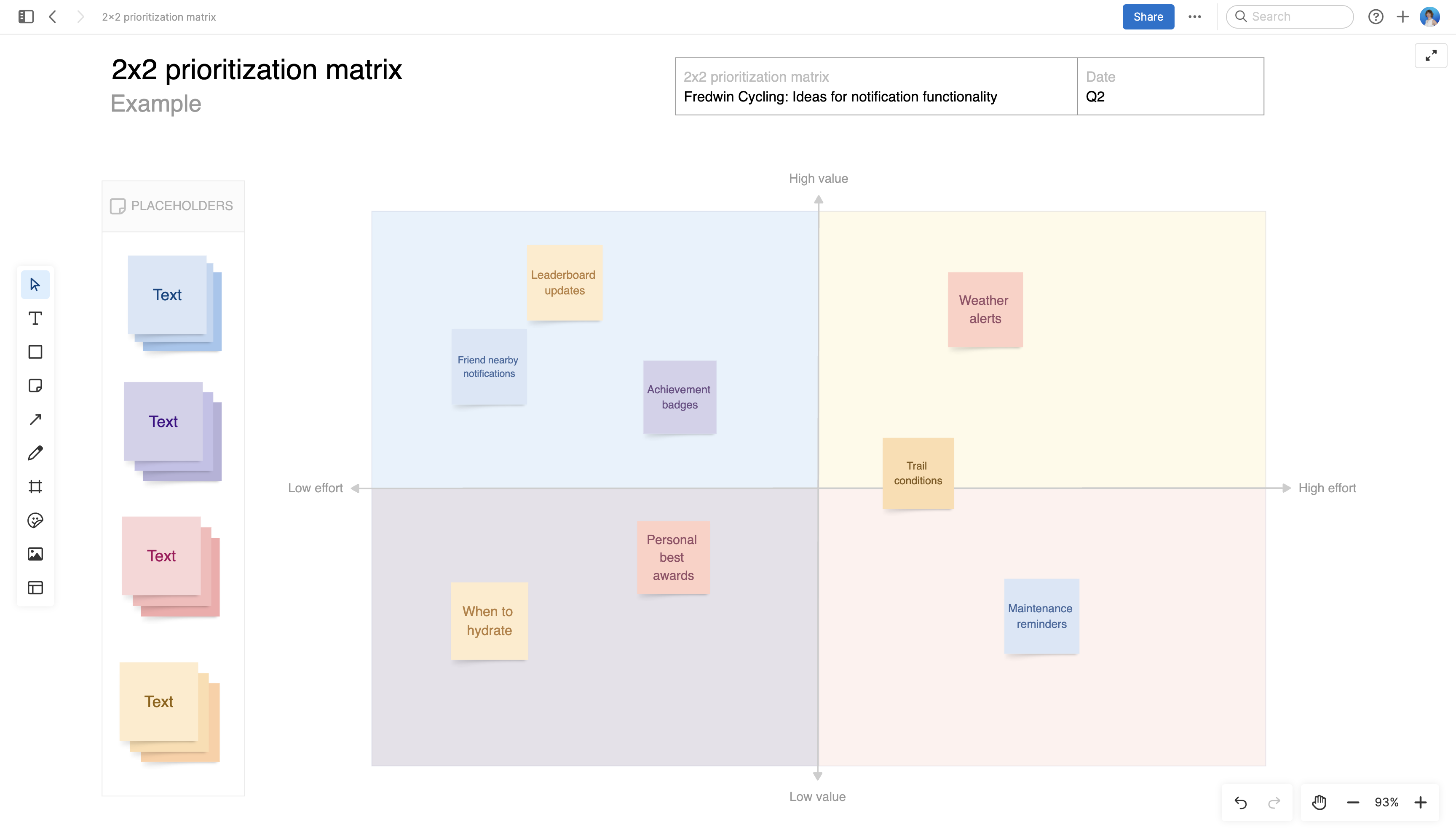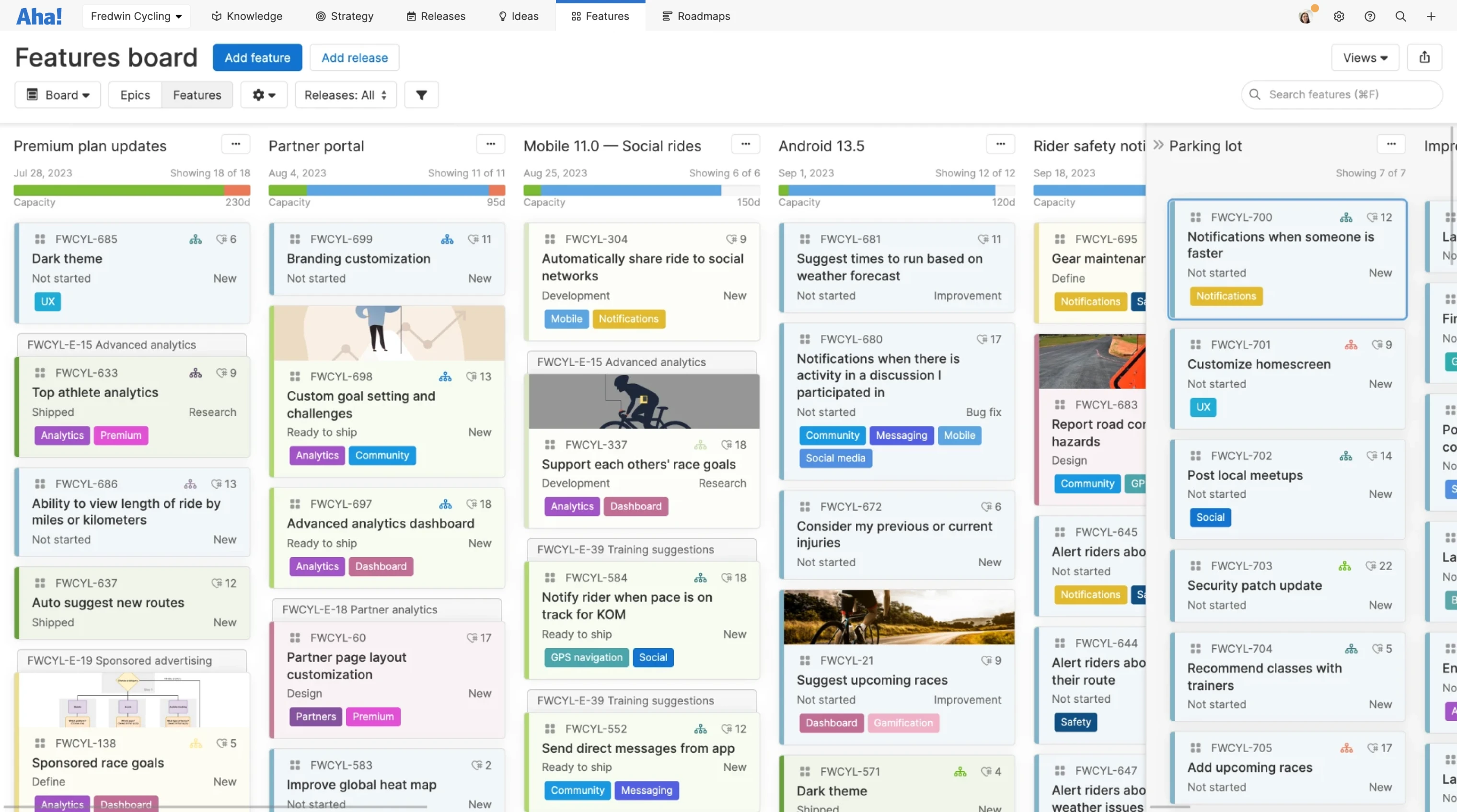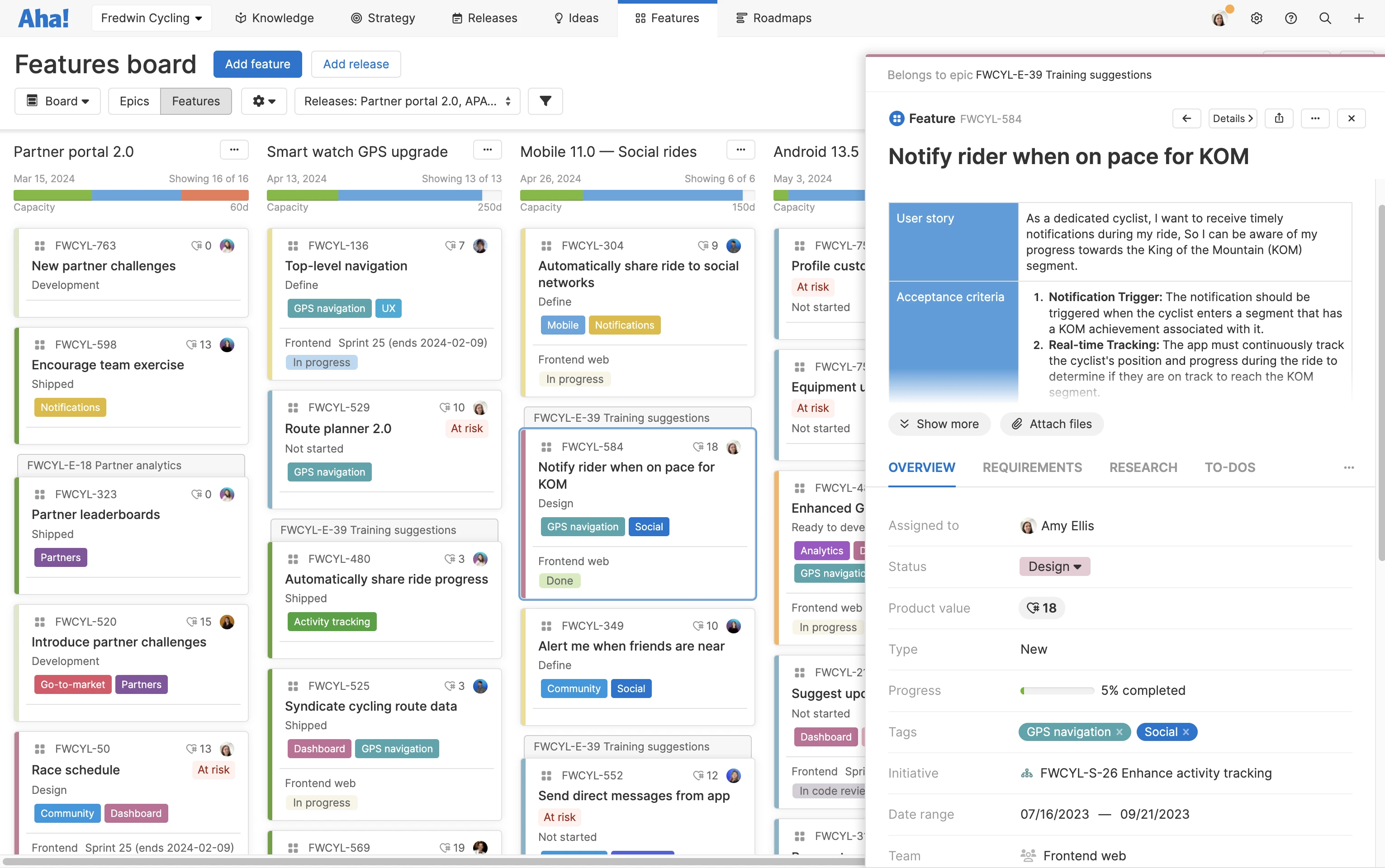How to prioritize product features
Last updated: February 2025
Feature prioritization is the process of deciding what to build next. This exercise helps product managers assess potential features based on value, urgency, and feasibility. Your prioritization work informs development decisions and enables you to organize the product backlog.
There are many frameworks and tools to help with feature prioritization, such as MoSCoW, RICE, and the Aha! product value scorecard.
These can help you juggle ideas from many sources — customer ideas, requests from the sales team, and feedback from leadership. There are always plenty of opinions about what should be built and when. It can be disorienting to be pulled in many directions at once. Internal squabbles about what to build next can cloud your objectivity.
Whiteboards can help you prioritize what to work on next based on value and effort.
To cut down on guesswork, take a goal-first approach. Start with strategy — including measurable goals that align with your product vision. Doing so will bring clarity to feature prioritization and, ideally, create a repeatable process that the entire product team can follow.
The best product managers take the goal-first approach even further and use quantifiable metrics to score ideas and features based on potential value. Assigning a tangible score makes it easier to engage in feature prioritization and decide what to build next, sharing the reasoning with others.
Jump ahead to any section to learn more:
Organize your features backlog
Some product teams use static spreadsheets, email, or even development tools to track and organize ideas and features. This type of ad-hoc process can be labor-intensive and difficult to keep information organized and up to date. Teams that use purpose-built product management software are able to manage idea backlogs, planned features, and product roadmaps all within one system.
In either case, it is important to start the prioritization process by reviewing all submissions and requests that you receive from customers and other stakeholders. When an idea aligns with your product strategy, it becomes a key candidate in the feature prioritization process and can be added to your product backlog. This backlog serves as an inventory of features that you want to pursue — but have not yet scheduled or begun defining.
Before prioritizing features in your backlog, it can be helpful to sort out what you have. Here are a few ways to organize features:
By theme or area of your product: Organize front-end features versus back-end features. Or mobile versus desktop features. You could also organize features based on the user persona who benefits most from the enhancement.
Based on a user story map: User story mapping is a visual exercise that creates a dynamic outline of a user's interactions with a product. Organizing features based on a user story map gives you groups of features at each step of the customer journey.
Based on how features roll up to product strategy: For example, some features may help you reach your revenue goals. Others differentiate your product in the marketplace. Sorting features in this way ensures that you are keeping top-level goals in mind.
The features board above is available in Aha! Roadmaps.
Score and rank features in your backlog
Now that you have organized your features, it is time to prioritize. There are many prioritization frameworks — choose one that can be adjusted to best support your strategic goals. Apply the framework to a product scorecard.
For example, some product managers use the RICE scoring model. RICE stands for reach, impact, confidence, and effort. You could easily apply the factors below to a scorecard:
Reach: How many users will this feature benefit?
Impact: How much will this feature impact those users?
Confidence: How confident are you in these estimates?
Effort: What is the time investment for this feature?
Scorecards are essential for feature prioritization because you can choose metrics, scales, and weightings to assign an objective value to each feature. In general, metrics should address considerations such as customer impact, revenue increase, effort to develop, and cost to implement.
Regardless of what prioritization framework you follow, these questions should be asked when scoring features:
How many customers will benefit?
What kind of value does this feature add?
Will this feature impact new users or existing users?
How much will sales increase?
How many hours will it take to implement?
How much do these hours cost?
Scorecards can get quite complex depending on the number of variables, but you can keep it simple too. For example, you might use a 2x2 prioritization matrix comparing value and effort. Subtract effort from value to identify an overall score.
This is an example of a features board in Aha! Roadmaps with one feature's drawer open. It has its own product value score — making it easier to prioritize.
Plan and prioritize features for your releases
Now that you have prioritized your backlog of features, you can move high-priority work to a current release or save for the future. Once assigned to a release, the requirements for each feature are typically defined by product managers in more detail.
You may work cross-functionally with an engineering manager or scrum leader to make these decisions. For agile teams who are continuously iterating, product managers are regularly reviewing and reprioritizing their backlogs.
A transparent, metrics-based approach helps you assess incoming requests. And you provide a predictable evaluation process for your team too. When everyone is reviewing features and making decisions using the same method, you can remove emotion from the process and make more informed decisions.
Read more: What is a features roadmap?
Frequently asked questions on how to prioritize product features
Which cross-functional teams do product managers work with to prioritize features?
Product managers collaborate with several teams to prioritize features. You work closely with the engineering team to understand technical constraints and feasibility. You partner with the design team to ensure that prioritized features align with the product's design principles and will enhance user satisfaction. You gain valuable feedback from customer success around what your users need most. And you also collaborate with executive leaders, marketing, finance, and legal — ensuring everyone is aligned on upcoming work and how it connects to your company's strategic goals.
How do you manage feature requests from sales to close deals?
The sales team hears firsthand what customers are struggling with — which is why it is wise to approach feature requests with curiosity and openness. After all, what you learn from sales can reveal new pain points and opportunities to create value. But fielding several feature requests that all feel urgent and unvetted can be overwhelming.
While you may be tempted to ignore or shut the conversation down, resist the urge. Ask questions that help you understand what your customer really wants. What did the customer ask for and what was promised? What were they hoping to achieve? What specific problem did they cite as the reason for the request?
Listen closely and lead with strategy. This will allow you to have tough and objective conversations about why a request aligns (or does not align) with the company and product goals. And remember that you may already have work planned on your roadmap that will solve the customer's pain.
How does product management software streamline the feature prioritization process?
Product management software helps you make informed decisions about which features to prioritize and why. Use purpose-built software like Aha! Roadmaps to aggregate customer feedback, market research, and internal input all in one place — providing a comprehensive view of all feature requests. Take a goal-first approach, using quantifiable metrics to score ideas and features based on strategic value. Then visualize your feature ranking within the software to identify high-priority items and promote them to your product backlog (or directly to your roadmap). Throughout the entire process, engineers, UX designers, and product marketers can stay updated and contribute their insights in real time.
What is a product backlog?
A product backlog is a prioritized inventory of features, defects, or technical work that has yet to be worked on. It should be work that is considered valuable from the product owner’s perspective. It can also include ideas that have been identified and, in some cases, prioritized to include in future releases.
